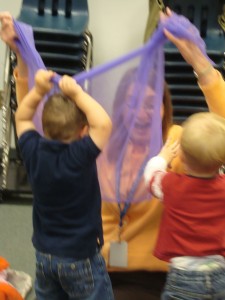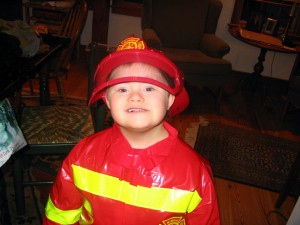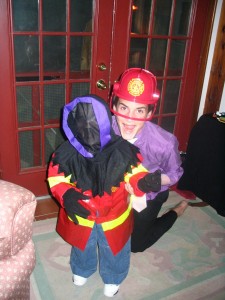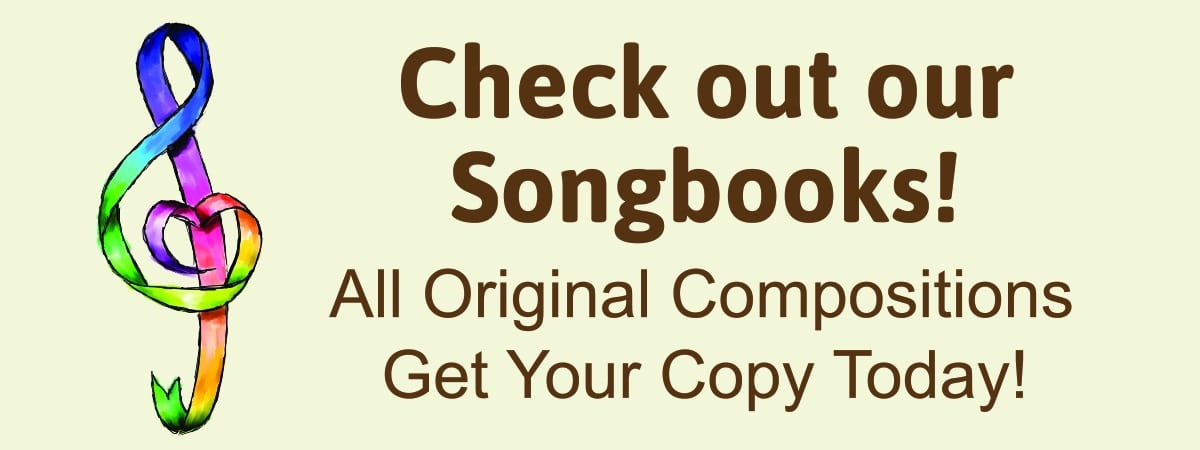Peeling the Onion
One thing that I find most satisfying about music is how it connects the head and the heart – cognition and emotion – without requiring the landing spot of language. That’s one reason why music is so perfect for young children who are just developing speech. Music creates a feeling and thinking space where children can experience deeper and more abstract parts of being human that they might not yet be able to put into words. As music therapists, we know how to create that special space through musical elements such as melody, harmony, rhythm and timbre. As I compose or adapt music for my young ones and their families, I question myself about the meaning of the musical material or lyrics that I choose. How can the experience of being in the music give children a chance to not only make music, but feel and think and question and test and problem solve? What is the deeper meaning in the songs we choose for our children? Why are certain songs so popular? I call this type of examination ‘Peeling the Onion’. In this occasional series, I want to share with you some of the ideas I have about holiday songs and how I try and ‘peel the onion’ of meaning behind our cultural traditions and the music that we choose. There is the outer layer of specific words and concrete objects such as learning the color orange in a pumpkin song. Peel to the next layer and you might find that the song about the winter holidays use words about family or presents. Peel another layer and there might be a deeper shared meaning of love or belonging. I think knowing how to peel the onion when creating music experiences for young children is one way that music therapists are unique in the world of early childhood music. I hope you will share with our Raising Harmony community your thoughts about ‘Peeling the Onion’.
Peeling the Onion – Halloween
My own children had such complex feelings about the fall holiday of Halloween. The candy was fine, but the costumes and decorations were another deal all together. One child gravitated to the blood dripping, monster faces and seemed to love to hide behind that image. Another one was terrified by any costume and couldn’t wait each year for it to be over. I see this same ambivalence with my young students about this yearly ‘celebration’. There often is a tussle between the parent who wants to see their little child in that perfect, cute costume and the child who throws a fit when it is time to actually dress up. What is behind this? Well, that is what peeling the onion is about. Here are some thoughts about ways to use music to explore these complicated feelings.
If I Cant’ See You, Are You Still You? If You Can’t See Me, Am I Still Me?
We know from child development experts such as Piaget, that young children take time to understand conservation of matter. ‘If I can’t see it, it doesn’t exist’. I see this happen all the time with young children. When Mommy puts a mask on, Mommy is gone. On Halloween does everybody disappear? Will they ever come back? If I put a costume on, will I ever be me again? I think this is the deeper layer behind children’s experience of Halloween.
To prepare my young children for this I introduce opaque scarves early on. They cover, but you can still see through them. The musical material I choose includes a minor melody with quiet, hushed timbre. “Who’s that underneath the cover? Who’s that? I wonder who I’ll see.” (from You and Me Makes…We: A Growing Together Songbook, 2012) The musical sounds echo the fear and anticipation that many children show. But the final phrase assures children with an affirming melodic contour “Take if off. It’s me!”
Trying on Different People
Costumes, though, can sometimes give young children a chance to explore being different people. Early childhood is the time for experimentation and choices. We often see this as children seem to take on different personalities as they move through development. How often have I heard parents say ‘He used to be such a sweet, quiet boy and now he is a wild man!’? Halloween can be a time when music experiences can give children a chance to explore being someone different. This picture is of my nephew as a little boy. He loved the power of being the strong fire fighter. In sessions, I generally use the same scarves as costumes…tie a blue one around the neck to be a super hero; put a purple one over my head as a crown. “Today I Think I Won’t Be Me” (from You and Me Makes…We: A Growing Together Songbook, 2012) is firmly in a major key with a very definite descending melody. The rhythm and structure are very straightforward and clear. Add some instruments that reinforce different personality qualities such as a bass drum for strength or a set of wind chimes for magical.
Request, Recognize, Respond
In my family growing up, my mother always insisted that in order to ‘Trick of Treat’ we needed to provide a trick before we got a treat. The trick was usually a song we sang or a poem we recited. It made the Halloween experience more about sharing than about a one way giving. Halloween is a perfect time to help our young children find the words through song to request a treat, recognize the person who is giving and respond with a thank you. There are several songs that I use, and I would be happy to share them with you. Just contact me through the web site and I will send you the music. Better yet, write your own song with the three components: request, recognize and respond. The request phrase should generally have a rising contour; the recognize might leave space for a musical give and take; and the response should have a sense of completion, maybe through the use of a descending fifth interval.
There are many other ways to ‘peel the onion’ with all the themes of Halloween. I look forward to hearing your thoughts and your music.
Beth


